Articulation Therapy or Phonological Therapy: Which Therapy Approach to Use
Which therapy approach should you use when a child struggles to say sounds correctly?
Articulation Therapy Approach?
Phonological Therapy Approach?
Something else?
This page will explain the difference between an articulation therapy approach and a phonological therapy approach (along with a few others). We’ll also help you decide which approach is right for each client you work with.
Speech Sound Screening Checklist:
There are four main approaches to working on speech sounds with children and teens.
Use the following checklist to determine which path is most appropriate for each client:
Articulation Therapy Approach
This is the best pathway for traditional sound-by-sound therapy.
In articulation therapy, we focus on teaching children how to produce individual speech sounds correctly, starting with isolated sounds and gradually working up to using them in words, sentences, and conversation. This structured approach helps build muscle coordination and sound awareness, making speech clearer and more intelligible over time.
Choose the Articulation Therapy Approach if the Individual:
- Says specific sounds incorrectly
- Has certain sounds that are distorted or sound different than they should (such as a lisp)
Phonological Therapy Approach
- For children who have phonological processes, or problems with entire classes of sounds
- These children are often difficult to understand due to many sound errors
- All children use phonological processes up to certain ages but they disappear between 3-5 years
- Therapy differs from articulation because you don’t start with sounds in isolation, you start with minimal pairs of whole words to show the difference between the correct production and the child’s error
- Therapy Phases: Auditory discrimination, production at the single word level, phrase, sentence, unstructured conversation, structured conversation
Cycles Therapy Approach to Phonology
- For children who meet the following criteria:
- Highly unintelligible (very difficult to understand)
- Frequently leave out or omit speech sounds
- Replace some sounds with other sounds
- Don’t use very many different consonant sounds
- Instead of working on one phonological process until it is mastered, the children works on each process for a few sessions before moving on to the next. Then, processes are cycled through and targeted again
- This approach is supposed to mirror typical phonological development
Motor Speech Therapy Approach
Motor speech disorders, such as childhood apraxia of speech (CAS) and dysarthria, affect a child’s ability to plan, coordinate, and produce speech sounds accurately. Unlike articulation or phonological disorders, which stem from difficulties with specific sounds or patterns, motor speech disorders are rooted in challenges with motor planning, sequencing, and execution of movements needed for clear speech. These difficulties can result in inconsistent speech errors, trouble producing longer words, difficulty transitioning between sounds, and even physical struggle during speech production.
Intervention for motor speech disorders focuses on building motor planning skills, increasing speech accuracy and consistency, and supporting smooth and natural speech movements. Therapy in this pathway follows a structured, motor-based approach that emphasizes repetition, multisensory cueing, and carefully sequenced speech practice. Unlike traditional articulation therapy, which focuses on individual sounds, motor speech therapy targets the movement between sounds to improve speech fluency and intelligibility.
Mumbling Therapy Approach
Mumbling occurs when speech is unclear, slurred, or too quiet, making it difficult for others to understand. Children who mumble may drop sounds, speak too quickly, or fail to fully articulate words, often without realizing it. While their speech may technically be correct, the lack of clarity, volume, or articulation can interfere with communication, leading to frustration in academic and social settings.
The goal of this Curriculum is to help children recognize when their speech is unclear and develop strategies to improve clarity and volume. Unlike articulation or phonology therapy, which focuses on correcting specific speech sound errors, mumbling therapy targets overall speech clarity, awareness, and self-monitoring. This process involves intentional over articulation, cued corrections, and ultimately independent self-correction in conversation.
Other Speech Sound Therapy Approaches
- Core Word Therapy Approach: Good for children with very severe speech problems (like severe childhood apraxia of speech) or those with limited attention for drill and practice. Also helpful for children who make very slow progress in speech or who only say a few words because of their speech problemsA short list of common words that the child mis-pronounces is assembled
These words are practiced in isolation and then the child gets to play with whatever he wants (as long as he will talk with the therapist). When those words come up in conversation, they are practiced with correct production
- Contextual Utilization: Pair the target sound in syllables with other sounds that will make it easier for the child to produce it (For example, production of a “t” may be facilitated in the context of a high front vowel)
- Minimal Oppositions Contrast Therapy: also known as “minimal pairs” therapy, uses pairs of words that differ by only one phoneme or single feature signaling a change in meaning, in an effort to establish contrasts not present in the child’s phonological system
- Maximal Oppositions Contrast Therapy: uses pairs of words in which one speech sound known and produced by the child is contrasted with a maximally opposing sound not known or produced by the child
- Treatment of the Empty Set: similar to maximal opposition contrasts, but uses pairs of words containing two maximally opposing sounds that are unknown to the child—ideally, an obstruent with a sonorant (e.g., /l/ vs. /s/
- Multiple Oppositions Contrast Therapy: a variation of the minimal opposition contrast approach that uses pairs of words contrasting a child’s error sound with three or four strategically selected sounds that reflect both maximal classification and maximal distinction
- Distinctive Feature Therapy: Target distinctive features that are missing in the child’s repertoire (frication, nasality, voicing, and place of articulation)
- Metaphon Therapy: Metaphon therapy is designed to teach metaphonological awareness, the awareness of the phonological structure of language. You teach the child about phonological rules, like the difference between noisy and quiet sounds for voiced vs. voiceless
- Naturalistic Speech Intelligibility Intervention: During natural activities, the child’s errors are recast when the child is most likely to repeat them but the child is not demanded to do so
More Information on the Additional Approaches Here: https://www.asha.org/practice-portal/clinical-topics/articulation-and-phonology/#collapse_6

About the Author: Carrie Clark, MA CCC-SLP
Hi, I’m Carrie! I’m a speech-language pathologist from Columbia, Missouri, USA. I’ve worked with children and teenagers of all ages in schools, preschools, and even my own private practice. I love digging through the research on speech and language topics and breaking it down into step-by-step plans for my followers.
Fun Fact: At the last ASHA convention I went to, I purchased a double-wide booth so I could fill it with inflatable lounge chairs and phone chargers to create a hangout space. Did you see me there???
Connect with Me:
Podcast: Play in new window | Download | Embed
Subscribe: Apple Podcasts | RSS
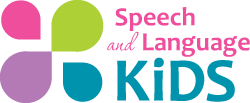

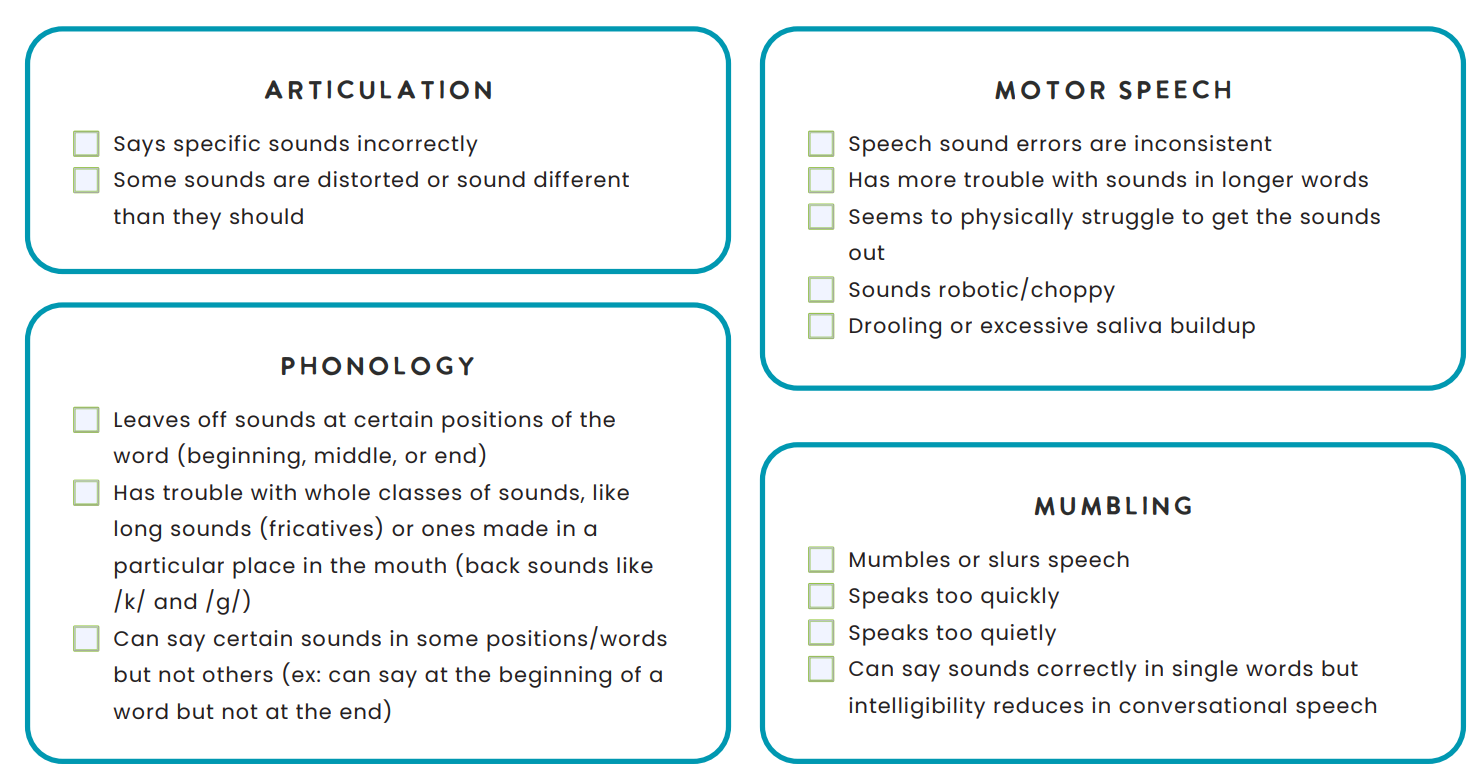
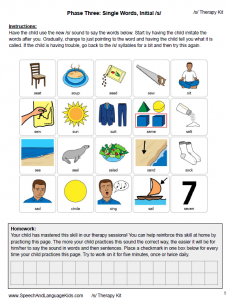
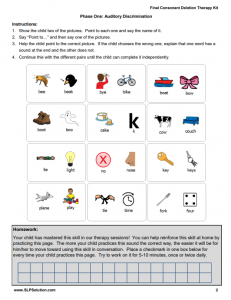
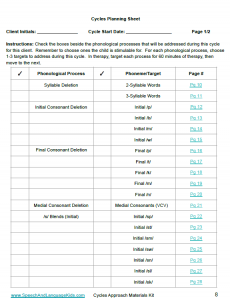
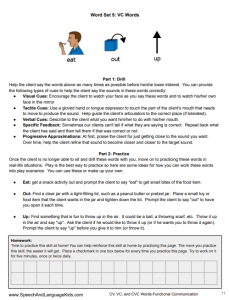
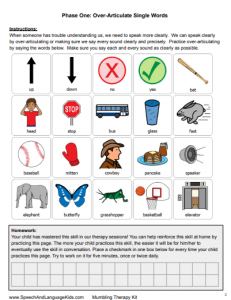


Wow, I had no idea there were so many different approaches to speech therapy. I have a niece who has a hard time pronouncing the “th” sound. I think in that case articulation therapy would be the best option for her.
Usually articulation is best if there is just one sound that the child is having trouble with!
I like your comment on how phonology therapy can be useful for people who have problems with entire classes of sound. I would imagine that if your child struggles with a broad range of problems this would be helpful. This would probably allow them to get these processes even after the ages of 3-5 like you mentioned.
Exactly!
I like that you mentioned that core word approach is a type of speech therapy that helps children with severe problems in speaking and can only speak a few words. My son is turning 4 next month, but he’s still unable to construct a sentence. His vocabulary seems to be too limited, so I will be sure to consider visiting a speech therapist and ask about core word approach.
It was nice that you suggested choosing a core word approach if your child is suffering from very severe speech problems and is making a very slow progress in speech. My 5-year old son could not make a sentence and often cries when he needs anything that he could not talk about. I’m interested in finding a speech pathologist for him, so I’ll make sure to consider all your tips.
what approach should I use for someone with speech delay?